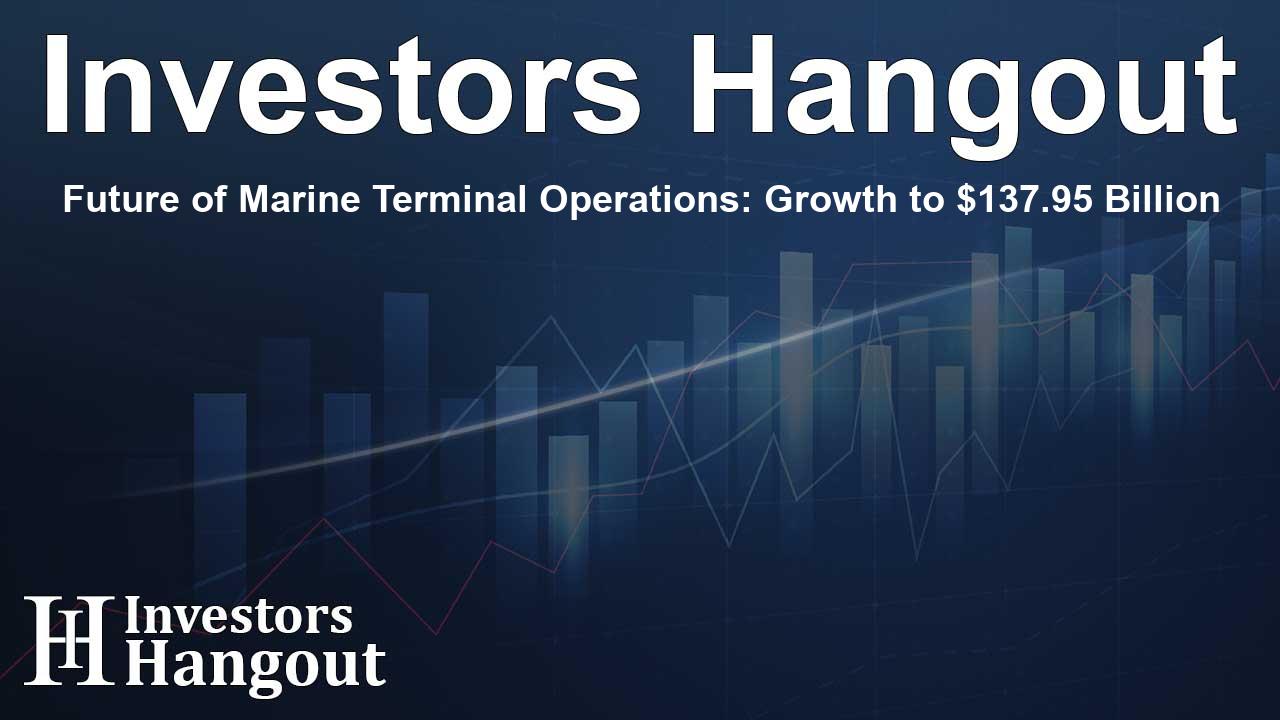Future of Marine Terminal Operations: Growth to $137.95 Billion

Marine & Container Terminal Operations: A Growing Market
The marine and container terminal operations market is poised for significant growth, with forecasts indicating a market valuation of US$ 137.95 billion by 2034. A recent report by Fact.MR highlights the market's trajectory, projecting a compound annual growth rate (CAGR) of 6.9% from 2024 to 2034. With international trade on the upswing, the logistics sector adapts to the increasing demand for efficient port operations.
The Importance of Terminal Operations
Every day, marine terminals play a crucial role in global trade by acting as pivotal logistics hubs. These facilities facilitate the movement of goods worldwide, integrating sophisticated digital tracking systems with traditional freight handling. As commerce grows, so does the dependence on these essential operations, leading to a surge in demand.
Why is There Rising Demand?
The rising demand for terminal operations can be attributed to several factors. Modern terminals provide economic benefits while improving supply chain efficiency. They offer services like automated cargo handling and intermodal connectivity, elevating the logistical capabilities of businesses worldwide. Additionally, they are playing a vital role in sustainability efforts, helping to reduce transportation costs and environmental impact through innovative shipping solutions.
Technological Innovations in Terminal Operations
The integration of advanced technologies has transformed marine and container terminals into intelligent logistics hubs. Cutting-edge tools, such as artificial intelligence and automated guided vehicles (AGVs), enhance terminal operations and enable efficient handling of increasing cargo volumes. This technological evolution is not only beneficial for streamlining processes but also crucial for managing the elevated expectations of international supply chains.
Investing in Port Infrastructure
Investment in port infrastructure continues to escalate as stakeholders recognize the value of adapting to technological advancements. Increased efficiency driven by technology facilitates the growth of maritime and container terminals, as they become indispensable in the global trading landscape. As a result, further investment in infrastructure development is anticipated, ensuring that these terminals can manage the growing volume of global trade effectively.
Insights from the Market Study
The insights from the Fact.MR report reveal several projections that indicate market dynamics. For instance, the global marine & container terminal operation market is forecasted to reach US$ 70.75 billion by 2024, with specific regions such as North America anticipated to account for significant portions, reaching US$ 12.36 billion by the end of the forecast period.
Regional Growth Patterns
Regions such as East Asia are expected to experience an impressive CAGR of 7.7% through 2034, driven by an increasing focus on intermodal connectivity and efficiency in freight handling. Meanwhile, Japan’s market is projected to grow at a CAGR of 6.5%, emphasizing the importance of innovation in terminal operations to cater to evolving trade patterns.
Leading Players in the Industry
Several major players are at the forefront of this expanding market. Companies like APM Terminals, DP World, and Hutchison Ports are innovating to enhance operational efficiencies and drive the market forward. Their contributions are vital in shaping the future of terminal operations, ensuring competitiveness and adaptation to industry changes.
Continuous Improvement in Logistics
As logistics and supply chain management evolve, the adoption of marine and container terminal operations continues to grow. Constant advancements in technology support logistics improvement, ensuring the efficient and sustainable movement of goods. The market is not only expanding in size but also becoming increasingly sophisticated as demand grows for services that prioritize sustainability and efficiency.
Frequently Asked Questions
What is the expected growth rate of the marine terminal operations market?
The marine terminal operations market is projected to grow at a CAGR of 6.9% from 2024 to 2034.
What technology is currently impacting terminal operations?
Innovations such as artificial intelligence and automated guided vehicles significantly enhance the efficiency of terminal operations.
Which regions are showing the most growth potential?
East Asia and North America are among the regions expected to show significant growth in the marine terminal operations market.
How does sustainability play a role in terminal operations?
Modern terminals contribute to sustainability by reducing transportation costs and environmental impact through efficient shipping solutions.
Who are the leading players in this market?
Major players include APM Terminals, DP World, Hutchison Ports, and others who drive innovation in the industry.
About The Author
Contact Henry Turner privately here. Or send an email with ATTN: Henry Turner as the subject to contact@investorshangout.com.
About Investors Hangout
Investors Hangout is a leading online stock forum for financial discussion and learning, offering a wide range of free tools and resources. It draws in traders of all levels, who exchange market knowledge, investigate trading tactics, and keep an eye on industry developments in real time. Featuring financial articles, stock message boards, quotes, charts, company profiles, and live news updates. Through cooperative learning and a wealth of informational resources, it helps users from novices creating their first portfolios to experts honing their techniques. Join Investors Hangout today: https://investorshangout.com/
The content of this article is based on factual, publicly available information and does not represent legal, financial, or investment advice. Investors Hangout does not offer financial advice, and the author is not a licensed financial advisor. Consult a qualified advisor before making any financial or investment decisions based on this article. This article should not be considered advice to purchase, sell, or hold any securities or other investments. If any of the material provided here is inaccurate, please contact us for corrections.
